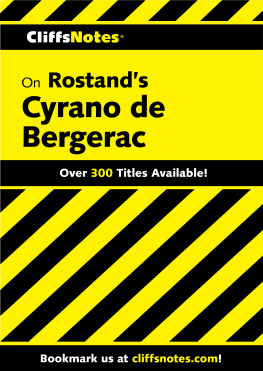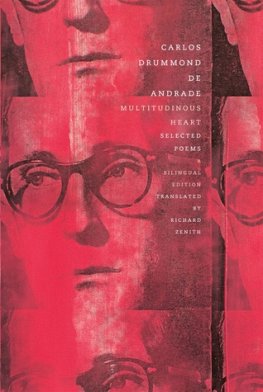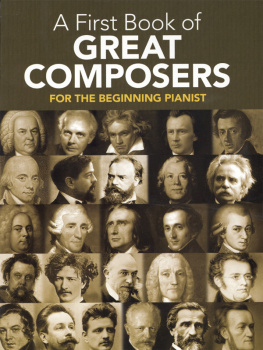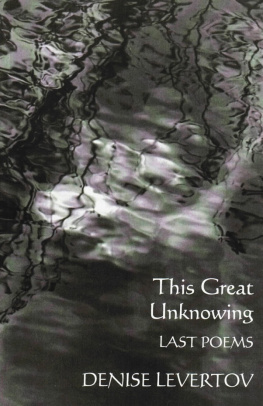Copyright 1971 Houghton Mifflin Harcourt Publishing Company
All rights reserved.
www.hmhco.com
cliffsnotes.com
For information about permission to reproduce selections from this book, write to or to Permissions, Houghton Mifflin Harcourt Publishing Company, 3 Park Avenue, 19th Floor, New York, New York 10016.
The publisher and the author make no representations or warranties with respect to the accuracy or completeness of the contents of this work and specifically disclaim all warranties, including without limitation warranties of fitness for a particular purpose. No warranty may be created or extended by sales or promotional materials. The advice and strategies contained herein may not be suitable for every situation. This work is sold with the understanding that the publisher is not engaged in rendering legal, accounting, or other professional services. If professional assistance is required, the services of a competent professional person should be sought. Neither the publisher nor the author shall be liable for damages arising herefrom. The fact that an organization or website is referred to in this work as a citation and/or a potential source of further information does not mean that the author or the publisher endorses the information the organization or website may provide or recommendations it may make. Further, readers should be aware that Internet websites listed in this work may have changed or disappeared between when this work was written and when it is read.
Trademarks: CliffsNotes, the CliffsNotes logo, Cliffs, cliffsnotes.com, and all related trademarks, logos, and trade dress are trademarks or registered trademarks of Houghton Mifflin Harcourt Publishing Company. All other trademarks are the property of their respective owners. Houghton Mifflin Harcourt is not associated with any product or vendor mentioned in this book.
eISBN 978-0-544-18096-3
v1.0616
Introduction
The classical tradition of French drama was formalized in the seventeenth century, and the eighteenth century was an imitation of the seventeenth. During this time, the plays were usually centered on characters from historymost often Greek or Roman history or literatureand were of a psychological nature. Any violent or shocking action, such as a battle, was simply told about and never re-enacted on stage. Aristotles unities were closely observedthat is, the action took place within a time span of no more than 24 hours, in one geographical location, and concerned one main character.
The state of French drama during the nineteenth century was as tumultuous as was the state of French politics. Victor Hugo broke the restrictive chains of French classicism with the famous Preface to Cromwell (1827), the manifesto of romanticism. Over the next 25 years, his dramas employed action as well as other dramatic devices denied to the classicists. During this period of literary and political upheaval, the schools of romanticism, naturalism, symbolism, and realism developed in France. Yet Cyrano de Bergerac does not really fit into any of these categories. Some have considered it a revival or culmination of romantic drama, but it did not truly revive this school nor continue it. Cyrano was presented in 1897 for the first time, half a century after Hugos last effort, and is not a part of any school or movement.
Rather, Cyrano seems an outgrowth of the medieval French literaturethe songs of the troubadours. Most notable of these were the Chanson de Roland and Roman de la Rose. The tales of Roland concerned a hero, brave, noble, loyal, and steadfast, who avenges any affront by killing the offender, and whose word is his bond. The Roman de la Rose is the prime example of the other kind of popular literature of that period, the type that idealized Woman and Love. The love in these tales was respectful, submissive, almost religious. Cyrano combines these two genres in its central character and its story. Rostand himself came from southern France where these tales originally developed and where the historical Cyrano de Bergerac had his roots.
Cyrano can also be considered as a virtuoso play, one written to exploit the talents of a particular actor. (See the section of this study guide entitled, Cyrano as a Virtuoso Play, for a more complete examination of this question.) Previously, Rostand had written La Samaritaine for Sarah Bernhardt, but that play did not meet with the popular or critical approval that Cyrano was to achieve. The fact that Cyrano has outlived the actor for whom it was supposedly written, and that many actors have played the lead role successfully surely outweighs the fact that the play might not have been written had not Rostand known an actor who was perfect for the role. More than many artistic efforts, Cyrano is a perfect blending of the authors personality, philosophy, and subject, resulting in a work of art that is enjoyable in and of itself, and which has been continually popular since its first performance.
Life and Works of Rostand
Edmond Rostand was born in Marseilles, France, on April 1, 1868. When he was twenty-two years old, he married the poet, Rosemond Gerard, and presented his first book, a volume of poems, to her as a wedding gift.
His first play, Les Romanesques, which concerned two young lovers, appeared four years later. And the next year, 1895, La Princesse Lointaine, was produced. It was the story of the Provenal poet, Rudel. Rostands next play was La Samaritaine, written for the popular French actress, Sarah Bernhardt. Most critics did not like it because one of the charactersand a minor one, at thatwas Christ.
Cyrano de Bergerac made its first appearance in 1897 with the actor, Coquelin, in the title role and was presented for 500 consecutive performances. It was the most popular play of the era, and since its first performance there has hardly been a time when it was not in production somewhere in the world. For, although the play is typically French, it is highly popular in other countries, even when it is translated poorly or cut unmercifully.
Rostands next play, LAiglon, was about Napoleons heir. It was too French for foreign audiences, who did not always revere Napoleon as much as did the French, and even in France it was never as popular as Cyrano. After its production, Rostand retired to the country for ten years to write Chantecler. It received some acclaim, but Paris audiences did not like it nearly so well as they had Cyrano.
Rostand was elected to the French Academy at the age of thirty-three, the youngest member at that time. After the production of Chantecler, he was raised to Commander of the Legion of Honor and received a Grand Diploma.
When World War I began, Rostand volunteered for service, but was refused. He consoled himself by writing patriotic poetry. One poem, praising America, was dedicated to Sarah Bernhardt, and another was occasioned by the sinking of the Lusitania.
Rostand was never robust, his health being one reason that he retired to the country, and he died in Paris on December 2, 1918. He left one drama, La Derniere Nuit de Don Juan, with an unfinished prologue, which further illustrated his idea of the unattainable ideal being more desirable than the real or practical.
In the dedication to Cyrano de Bergerac, Rostand says that he would like to dedicate the play to the spirit of Cyrano, but since that has passed on to Coquelin, the actor, he dedicates it to Coquelin. Because the actor who plays Cyrano is so very crucial to the success of the playall the other characters are merely supporting rolesit is fortunate that an actor whom the author considered perfect for the role was able to introduce it.
Next page








